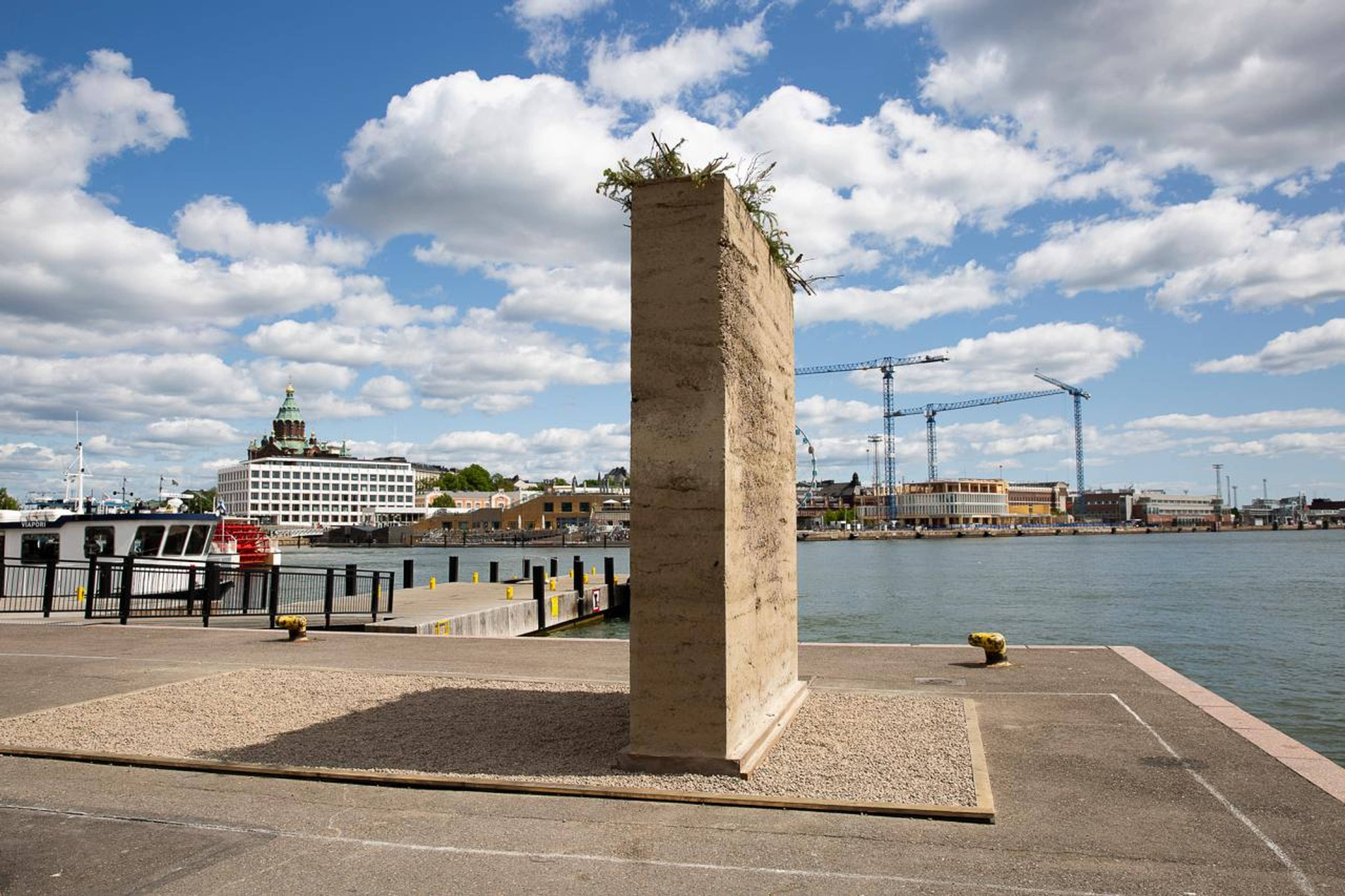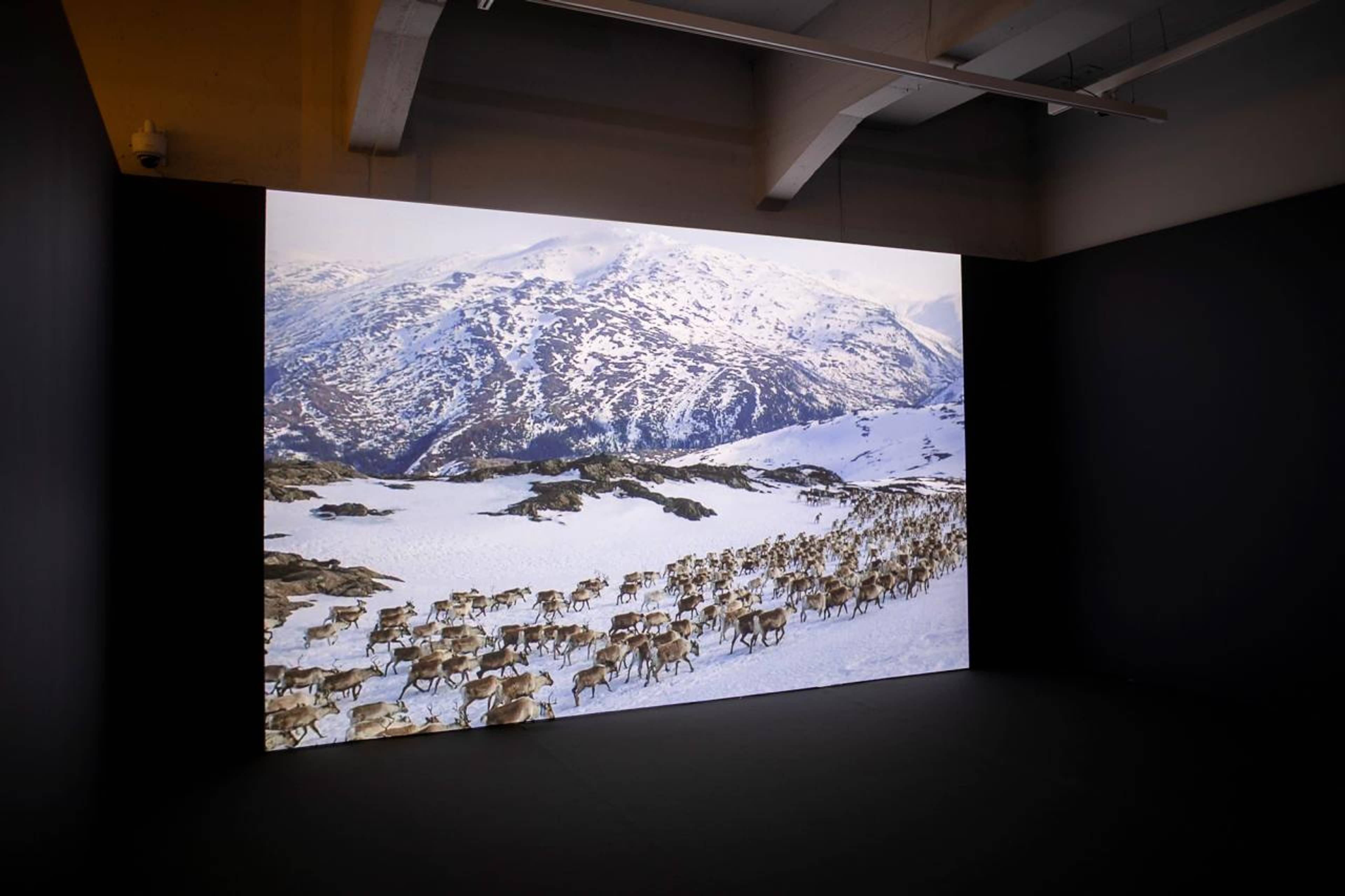The peppered moth (Biston betularia), so named for the dense freckling of black across its white wings, is a curious creature. During the industrial revolution, its numbers exploded because it was better camouflaged on newly soot-darkened birch trees, typifying a form of adaptation known as “industrial melanism.” I first encountered the insect on the island Vallisaari, a military fort turned state park off the coast of Helsinki, where I sat for a tarot reading with the Finnish artist and filmmaker Lotta Petronella. In her custom-made deck, the peppered moth – the “5” card – plays the role of the hierophant, or the giver of embodied and intellectual wisdom, whose evolution suggests a survival strategy for humans struggling to adapt to 21st-century climate crisis.
Part mascot, part guide, the peppered moth stayed with me for the rest of my time on Vallissari, browsing the second Helsinki Biennial, “New Directions May Emerge.” Curated by Joasia Krysa, it features fifteen site-specific artworks spread across the island, linked by a hiking path through verdant forest. Often, I found myself alone in the woods, with only the crunch of the dirt path and the songs of birds and insects as my fellow audience, reflecting on a proposition, spelled out in anthropologist Anna Lowenhaupt Tsing’s The Mushroom at the End of the World (2015), of learning by noticing, “caught by the abundance of life.”
Lotta Petronella sekä Sami Tallberg & Lau Nau, Materia Medica of Islands, 2023. © HAM/Helsinki Biennial/Sonja Hyytiäinen
Vallisarri, its lush vegetation layered over with a history of violence and ruin, offered a richly connective context for the biennial’s installations. Housed in a Tarkovsky-esque white-washed wooden shack, its walls lined with bottled tonics and dried herbs, Petronella’s apothecary, Materia Medica of Islands (2023), hosted performances from a traditional Finnish choir and a meal by the chef Sami Tallberg, who foraged the island’s plants for a salad. Over the biennial’s duration, this multi-disciplinary collaboration offered a form of analog world-making, its grand but indeterminate narrative seeded with things unnoticed without the reifying power of art.
Nestled in the trees just off a nearby trail, the tent-like polyester walls of Alma Heikkilä’s coadapted with (2023) offer screens for the mossy pattern-making of plant matter and rain water, their white lines standing in stark contrast to the bright green of the surrounding trees. Under an aperture in the roof, a small, plaster, log-like sculpture has imbued with plant dyes over the course of the exhibition, documenting an otherwise unseen process constantly brewing across the forest floor.
Alma Heikkilä, coadapted with, 2023. © HAM/Helsinki Biennial/Kirsi Halkola
Other artworks bring to the surface the hidden technologies we might not normally observe in nature. Jenna Sutela’s Pond Brain (2023) is a water-filled bronze bowl in the shape of the artist’s own head. By rubbing the casts of her ears or splashing the water between them, vibrations interact with audio produced with machine-learning technology, producing an eerie soundscape of seas and outer space. Bringing us into contact with emergent technologies that increasingly underpin the world around us allows a rhizomatic speculation on new ways to live side by side.
Less meditative and more overt in their politics are the works in the mainland’s city center. At the recently completed Oodi Library, INTERPRT’s Colonial Present: Counter-mapping the Truth and Reconciliation Commissions in Sápmi (2023) presents data from and video of Finnish parliamentary hearings related to the dispossession of the Sami peoples of their lands. While informative, a three-channel installation in a library lobby showing dense research and the sausage-making of institutional politics is so nichely out of touch as to rival Ruben Östlund’s The Square (2017), Kristoffer Borgli’s Sick of Myself (2022), and even Ben Stiller’s Zoolander (2001) as a self-parody of disciplinary myopy. Whatever its intentions, Colonial Present is a ready case study of how limited is the practical impact heroically political art.
INTERPRT, Colonial Present: Counter-mapping the Truth and Reconciliation Commissions in Sápmi, 2023. © HAM/Helsinki Biennial/Sonja HyytiäinenI
In 2023, transcendental forest art is more relevant and resonant than any of the abject word salads with which activist art panders to audiences by referencing the latest news cycle. Ironically, artistic thematizations of geopolitics and identity feel increasingly retrograde in their cultural and political posturing. In fact, activist art-LARPing has worsened the institutional upheaval caused by the very upsurge in right-wing populism it purports to resist, while making it clear that awareness-raising is the territorial remit of the twenty-four-hour screen. We are bombarded by politics all day – why do we need in-person exhibitions to do this as well, and poorly at that?
“New Directions May Emerge” posits a bright future for art-making, where physical experience and its effects on the viewer are augmented by non-human actors, from moss and moths to artificial intelligence. Perhaps paradoxically, connecting to these unseen strata of knowledge – our counterparts in nature, computers, or the cosmos – brings us closer to our shared human experience. Rather than dividing us through traditional political language, the artists on Vallisaari lay out a vision of the future where the spiritual and ecological consequences of presence point toward a future of recoupment and re-enchantment. Most beautifully: We’re not the only ones who can save us.
Jenna Sutela, Pond Brain, 2023. © HAM/Helsinki Biennial/Sonja Hyytiäinen
___
Helsinki Biennial 2023
HAM Helsinki Art Museum and Vallisaari Island, Helsinki
11 Jun – 17 Sep 2023






